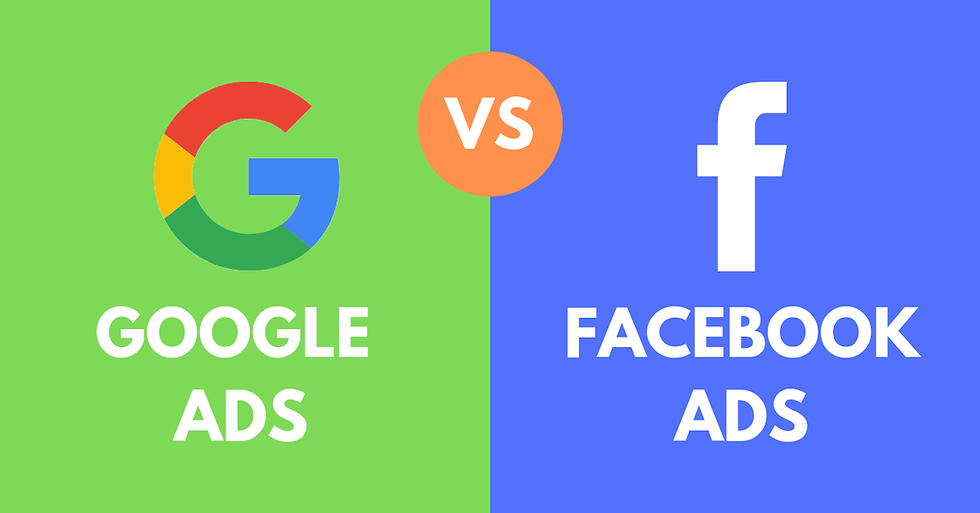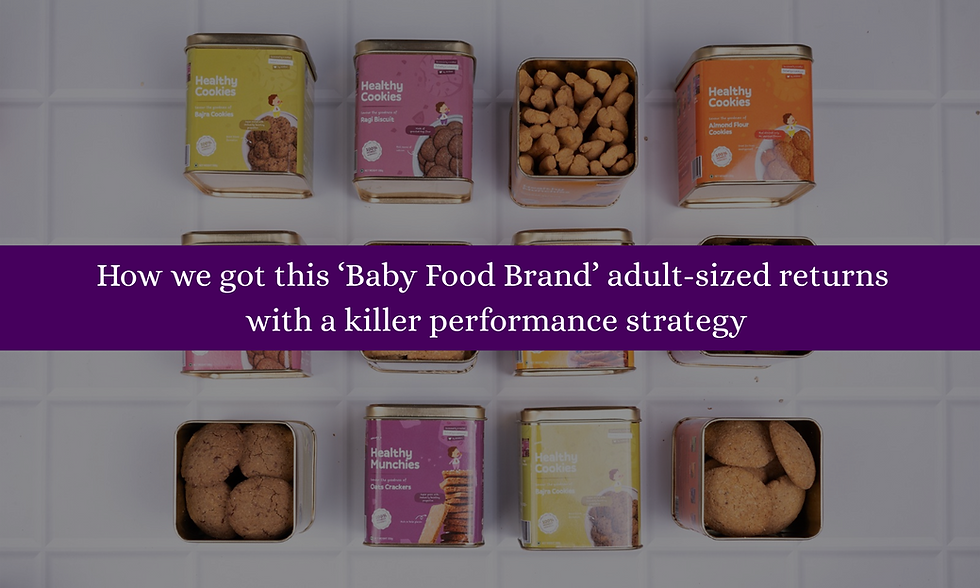Facebook Ads or Google Ads: Where should you invest
- businessflipup
- Jun 13
- 5 min read
Updated: Jul 7
In today's digital advertising landscape, businesses face a critical decision that can significantly impact their marketing success and budget allocation. Google Ads and Facebook Ads represent two of the most powerful advertising platforms available, yet they operate on fundamentally different principles and serve distinct purposes in the customer acquisition journey. Understanding their unique strengths, targeting capabilities, and cost structures becomes essential for making informed investment decisions that align with your specific business objectives.

This comprehensive analysis examines every crucial aspect of both platforms, providing the strategic insights necessary to determine which advertising approach will deliver the strongest return on investment for your particular business model.
Understanding the Fundamental Platform Differences
Google Ads: Capturing Active Intent Through Search
Google Ads operates as a search-driven advertising ecosystem that targets users based on the specific keywords they enter into Google's search engine, creating opportunities to reach potential customers at the precise moment they're actively seeking solutions. When a potential customer searches for "accounting software for small business," they're actively researching solutions to a specific business need, and Google Ads positions your business directly within these high-intent search results.

Facebook Ads: Building Relationships Through Social Targeting
Facebook Ads functions as a social media advertising platform that targets users based on comprehensive demographic data, behavioral patterns, interests, and social interactions rather than search queries. This approach allows businesses to reach potential customers before they realize they need a particular product or service, creating opportunities to build awareness and nurture relationships with audiences who match your ideal customer profile.
Targeting Strategies and Capabilities
Google Ads Targeting Approach
Google Ads primarily relies on keyword-based targeting that connects your advertisements with users who search for specific terms related to your business. This targeting method includes geographic location targeting, device-specific targeting, scheduling options for optimal timing, and demographic refinement based on age, gender, and household income levels. The platform allows precise control over where and when your advertisements appear, ensuring budget focus on the most relevant markets.

Facebook Ads Targeting Sophistication
Facebook's targeting capabilities operate on a much more granular level, utilizing extensive data about user behavior, interests, and social connections. You can target audiences based on detailed demographic information, interest-based targeting that analyzes hobbies and content engagement, behavioral targeting that examines purchase patterns and online activity, custom audiences from your customer lists, and lookalike audiences that find new potential customers similar to your existing customer base.
Cost Analysis and Return on Investment
Google Ads Investment Structure
Google Ads typically requires higher costs per click compared to Facebook, but this increased investment often translates into superior immediate conversion rates because the platform targets users who have already demonstrated active purchase intent. Industries with high customer lifetime values often see cost per click rates that exceed several dollars, but these higher costs are justified by immediate conversion potential and traffic quality. Google's Quality Score system rewards advertisers who create relevant, high-quality advertisements with lower costs and better ad positions.

Facebook Ads Cost Efficiency
Facebook Ads generally provide lower cost per impression and can be significantly more cost-effective for reaching large audiences, particularly when goals involve brand awareness or lead generation. Since Facebook targets users earlier in the customer journey, the conversion timeline may be longer, but the platform excels at building brand recognition and nurturing prospects through multiple touchpoints, potentially resulting in higher customer lifetime values and stronger brand loyalty.
Creative Formats and Content Requirements
Google Ads Creative Structure
Google Ads operates within structured creative formats that prioritize clarity and direct communication. Search advertisements consist primarily of headlines, descriptions, and display URLs that must quickly communicate value propositions. Shopping ads showcase product images alongside pricing information, while display advertisements across Google's network allow for more visual creativity but still operate within standard formats that prioritize clear messaging and strong calls to action.

Facebook Ads Creative Flexibility
Facebook's advertising platform provides extensive creative flexibility that allows brands to develop compelling visual narratives and emotional connections. Video advertisements can run up to 240 minutes, carousel advertisements showcase multiple products within one unit, and collection ads create immersive shopping experiences. This creative flexibility makes Facebook particularly effective for lifestyle brands, visual products, and businesses that benefit from demonstrating offerings through compelling imagery or video content.
Performance Measurement and Optimization
Google Ads Analytics Focus
Google Ads success measurement centers on metrics that directly relate to immediate business outcomes. Click-through rates indicate advertisement appeal, cost per click reveals bidding efficiency, conversion rates demonstrate landing page effectiveness, and Quality Score provides Google's assessment of advertisement relevance. Return on ad spend calculations help determine direct revenue impact and identify optimization opportunities.

Facebook Ads Engagement Metrics
Facebook advertising success requires monitoring metrics that reflect both immediate performance and long-term brand building effectiveness. Reach and impressions indicate brand visibility, engagement metrics demonstrate content appeal, cost per acquisition reveals true customer acquisition costs, and relevance scores indicate audience resonance. These engagement-focused metrics help optimize for long-term brand building rather than immediate conversions alone.
Strategic Platform Selection Guidelines
Google Ads becomes the optimal choice when your customers actively search for your products or services, when you need immediate results and direct response outcomes, when you operate in industries where people actively seek solutions, or when your business serves urgent customer needs that require immediate attention.
Facebook Ads excels when you're building brand awareness for new products, when your offerings require visual demonstration or emotional connection, when you want to reach specific demographic groups, when you're focused on developing long-term customer relationships, or when you have compelling visual content that effectively showcases your products or services.
Consider implementing both platforms when you have sufficient budget for comprehensive approaches, when you want to address the entire customer journey, when you operate in competitive markets requiring multiple touchpoints, or when you want to maximize market reach and establish dominant brand presence.
Budget Allocation and Implementation Strategy
For businesses choosing to leverage both platforms, consider allocating sixty percent to Google Ads and forty percent to Facebook Ads when experiencing high search demand. Allocate forty percent to Google Ads and sixty percent to Facebook Ads when primary objectives involve brand awareness and relationship building. Equal distribution works effectively for businesses testing both platforms to determine superior results.

Begin with the platform that most closely aligns with immediate business objectives, measure performance carefully, then gradually expand based on concrete performance data and available budget resources.
Conclusion: Building Your Digital Advertising Foundation
The decision between Google Ads and Facebook Ads ultimately reflects a deeper strategic choice about how your business approaches customer acquisition and brand development in an increasingly competitive digital marketplace. Google Ads provides the precision and immediacy necessary for capturing customers who are actively seeking solutions, making it indispensable for businesses that depend on consistent lead generation and immediate conversions. Facebook Ads offers the reach and relationship-building capabilities essential for long-term brand development, enabling businesses to connect with potential customers before competitors influence their decision-making process.
Rather than viewing these platforms as competing alternatives, the most successful marketers recognize them as complementary tools that address different stages of the customer journey and serve distinct business objectives within comprehensive growth strategies. Your investment should be guided by clear understanding of your business model, customer acquisition costs, and long-term growth objectives rather than industry trends or competitor activities, ensuring that your platform selection aligns with your specific market position and strategic priorities while maintaining the flexibility to adapt as you gather performance data and market feedback.



Comments